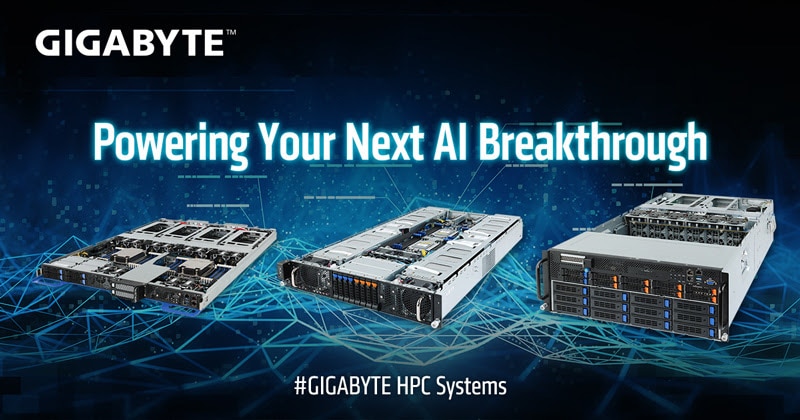Today GIGABYTE released seven new GPU heavy servers to cater to current and upcoming AI needs. These new servers have some of the highest GPU density on the market. While artificial intelligence is the first thing that comes to mind, the servers are also ideal for deep learning, scientific analysis and simulation, VDI or video streaming. GIGABYTE will be at SC19 at Booth 617, Denver Convention Center during November 18 to 21 in Denver, Colorado.

GIGABYTE has offered several GPU dense servers in its G-Series of server family. Today they are expanding this with seven new server, including five more 2nd Generations AMD EPYC severs (bringing their AMD total to 28 servers). The newly announced servers leverage GIGABYTE Management Console as standard, which is based on an AMI MegaRAC SP-X web-browser based platform and is compliant with the latest standards of Redfish API. Also available as a free download is GIGABYTE Server Management (GSM), GIGABYTE’s multiple server remote management software platform, and includes both a desktop and mobile APP.
The new servers include:
- G482-Z50 – supporting up to ten PCIe Gen 3.0 GPU cards in balanced mode, with each five GPU cards connected to one CPU downstream via a PCIe switch to minimize GPU to GPU communication latency. The G482-Z50 also features 12 x 3.5” SATA / SAS drive bays and 10 x 2.5” NVMe / SATA / SAS SSD drive bays for ample storage capacity, and can be used to build an “AI machine in a box” that offers powerful compute, GPU compute, storage and networking capabilities.
- G482-Z51 – supports up to eight PCIe Gen 4.0 GPU cards (with each GPU connected directly to the processor via PCIe root). It is ideal to integrate an “AMD on AMD” solution using 2nd Gen EPYC processors together with the Radeon Instinct MI50, the world’s first 7nm, PCIe Gen 4.0 data center GPU with a peak performance of almost 27 TFLOPS for FP16 deep learning workloads, or with other Gen 3.0 or Gen 4.0 GPU cards for applications such as cloud gaming or video streaming.
- T181-Z70 – based on the Open Compute Project (OCP) Standards, designed for a 21” OCP rack and featuring a separate PSU system, with power supplied to each server node by a bus-bar system running along the rear of the rack. The Open Rack standards have designed to create more efficient, flexible, and scalable datacenter hardware, such as improving rack / node density, better power efficiency and easier maintenance by centralizing power supplies, and so on. RACKLUTION-OP products are also ideal for converged server applications or to build software defined data centers.
- T181-Z70 – a 1OU RACKLUTION-OP GPU computing node, featuring dual 1st or 2nd Gen AMD EPYC 7001 / 7002 Series processors, four PCIe Gen 3.0 dual-width GPGPU bays in the rear, four frontal 2.5” hot swap SSD / HDD drive bays and two additional Gen 3.0 x16 low profile expansion slots for add-on networking or storage cards. It can be integrated together with GIGABYTE’s other RACKLUTION-OP products – compute nodes and trays, storage nodes and racks.
- G241-G40 – a 2U system that features four PCIe Gen 3.0 x16 expansion slot bays for GPUs, well as optimal storage capacity with four 3.5” hot swap SATA / SAS drive bays and two onboard M.2 slots. Since each GPU bay has an ample height of 1.5U and exceptional airflow characteristics, this system is extremely flexible to be used with a diverse range of active or passive cooled GPU cards.
- G591-HS0 – a 5U system that can accommodate up to 40 low profile PCIe Gen 3.0 x16 add-on cards via two expansion slot trays (20 per each tray) that slide out from the rear of the unit. Add on card options could include up to 32 single-width PCIe GPU or FPGA cards to make the G591-HS0 a powerful inferencing engine for an intelligent video analytics platform or other applications.
- G292-Z22 (single socket) & G292-Z42 (dual socket) – supporting up to eight PCIe Gen 3.0 GPU cards such as NVIDIA Tesla V100. Two additional models, G292-Z20 and G292-Z40 which offer native support for PCIe Gen 4.0 GPU cards will be released early in 2020.




 Amazon
Amazon